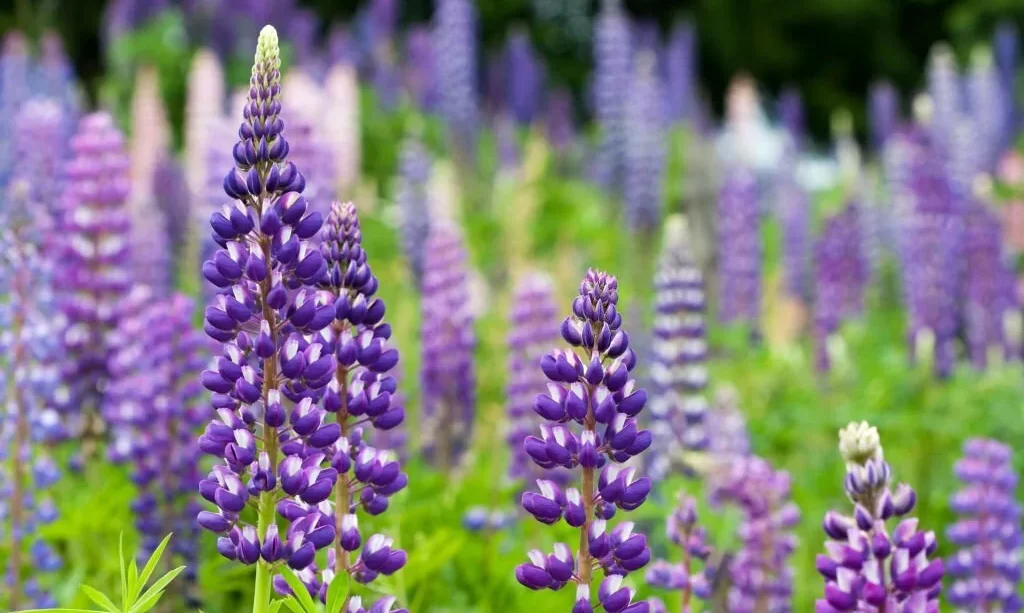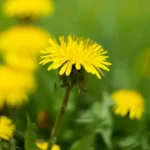Deer, with their gentle presence in many natural landscapes, can sometimes be a source of wonder and frustration for gardeners and nature enthusiasts alike. Their feeding habits can significantly impact the plant life in various ecosystems. In this article, we delve into the question of whether deer eat lupine, a beautiful and ecologically important plant species. By understanding the relationship between deer and lupine, we can better appreciate the delicate balance of nature and explore strategies to coexist with these graceful creatures while preserving the lupine plant.
- Lupine
- Perennial Flowers
- Butterflies
- Loves Sun
- Easy to Grow
The Lupine Plant: Overview
Lupine, a diverse genus of flowering plants, is known for its striking spikes of blossoms that vary in color from shades of blue and purple to pink, yellow, and white. These vibrant flowers, characterized by a distinct pea-like appearance, often grace meadows, woodlands, and gardens with their unique charm. The lupine plant is not only visually appealing but also ecologically significant. It plays a vital role in many ecosystems as a nitrogen fixer, enhancing soil fertility and providing habitat and sustenance for a variety of wildlife, particularly pollinators like bumblebees and butterflies.
Lupine species are not limited to a specific region; they can be found in diverse environments, from North American meadows to European woodlands and even the high-altitude slopes of the Andes. Their adaptability and aesthetic appeal make them a desirable addition to gardens, where they contribute to both the visual and ecological aspects of the landscape.
However, the question remains: do deer share our appreciation for lupine, or do they view it as a potential food source? To answer this, we must delve into the feeding habits of these elegant herbivores and explore their interactions with the lupine plant.
Deer Feeding Habits
Deer are primarily herbivores, meaning their diet consists mainly of plant material. However, the specific plants they consume can vary based on factors such as the season, the availability of food, and their geographic location. Understanding the general feeding habits of deer is essential to determine whether lupine is on their menu.
Deer are known to feed on a wide range of plants, including grasses, leaves, shoots, twigs, and even the bark of young trees. They are selective feeders, often choosing plants that are easily accessible and in abundance. While they typically graze on grasses and browse on shrubs, they may also consume a variety of other plants when these primary food sources are scarce.
Do Deer Eat Lupine?
The answer to whether deer eat lupine can be somewhat nuanced. While lupine is not typically at the top of a deer’s menu, it is not entirely immune to their browsing. Lupine plants can be vulnerable to deer feeding, particularly in regions where deer populations are high and food resources are limited.
Deer are more likely to feed on lupine when other preferred food sources become scarce, such as during periods of extreme winter weather or when their natural grazing areas are disrupted. In such situations, lupine can become a readily available food source for deer.
The susceptibility of lupine to deer browsing may also depend on its growth stage and the presence of more palatable plants nearby. Young, tender lupine shoots are more attractive to deer, while mature lupine plants with fibrous leaves are less likely to be consumed.
For gardeners and land managers who wish to protect lupine from deer browsing, it may be advisable to employ various deterrents and protective measures to maintain the vitality and beauty of these important plants.
Protecting Lupine from Deer
If you’re passionate about preserving lupine plants from deer browsing, there are several strategies and protective measures you can employ:
- Fencing: Erecting deer-resistant fencing around your garden or the specific area where lupine is planted is one of the most effective ways to keep deer at bay. Make sure the fencing is tall enough and properly maintained.
- Repellents: Various deer repellents are available on the market. These products emit odors or tastes that deter deer from feeding on plants. Be sure to reapply repellents as directed for best results.
- Companion Planting: Consider planting lupine alongside other deer-resistant plants. This can make your garden less appealing to deer, as they may choose to graze on nearby, more palatable options.
- Scare Tactics: Using scare tactics like motion-activated sprinklers or noise-emitting devices can startle deer and discourage them from entering your garden.
- Garden Design: Utilize garden design principles to create barriers and borders that deter deer from accessing your lupine plants. Rocks, dense shrubs, and other physical barriers can be incorporated into your landscape to protect lupine.
- Tough durable deer netting; Protects landscape and crops from deer and other animals
- Economical, lightweight deer protection; Black UV-resistant deer netting
- Reusable mesh deer fence; Stops deer and other animals from eating shrubs, berries, and vegetables
- Easy to use roll of deer fence netting; Attaches easily to posts and trees
- Do it yourself deer netting for protecting trees, shrubs, orchards and crops
Conclusion
The relationship between deer and lupine is a complex one, influenced by factors like geographic location, seasonal changes, and food availability. While deer may occasionally browse on lupine plants, these charming and ecologically valuable flowers are not their primary food source. Understanding deer feeding habits and employing protective measures can help ensure that lupine continues to thrive in gardens and natural landscapes.
The conservation of both native plants and wildlife is crucial to maintaining the delicate balance of our ecosystems. In our efforts to coexist with wildlife like deer, it is possible to protect and appreciate the lupine plant, which contributes not only to the visual beauty of our surroundings but also to the health and biodiversity of our natural world. By employing protective strategies, we can celebrate the enchanting beauty and ecological significance of lupine while safeguarding it from the occasional grazing of these graceful herbivores.






